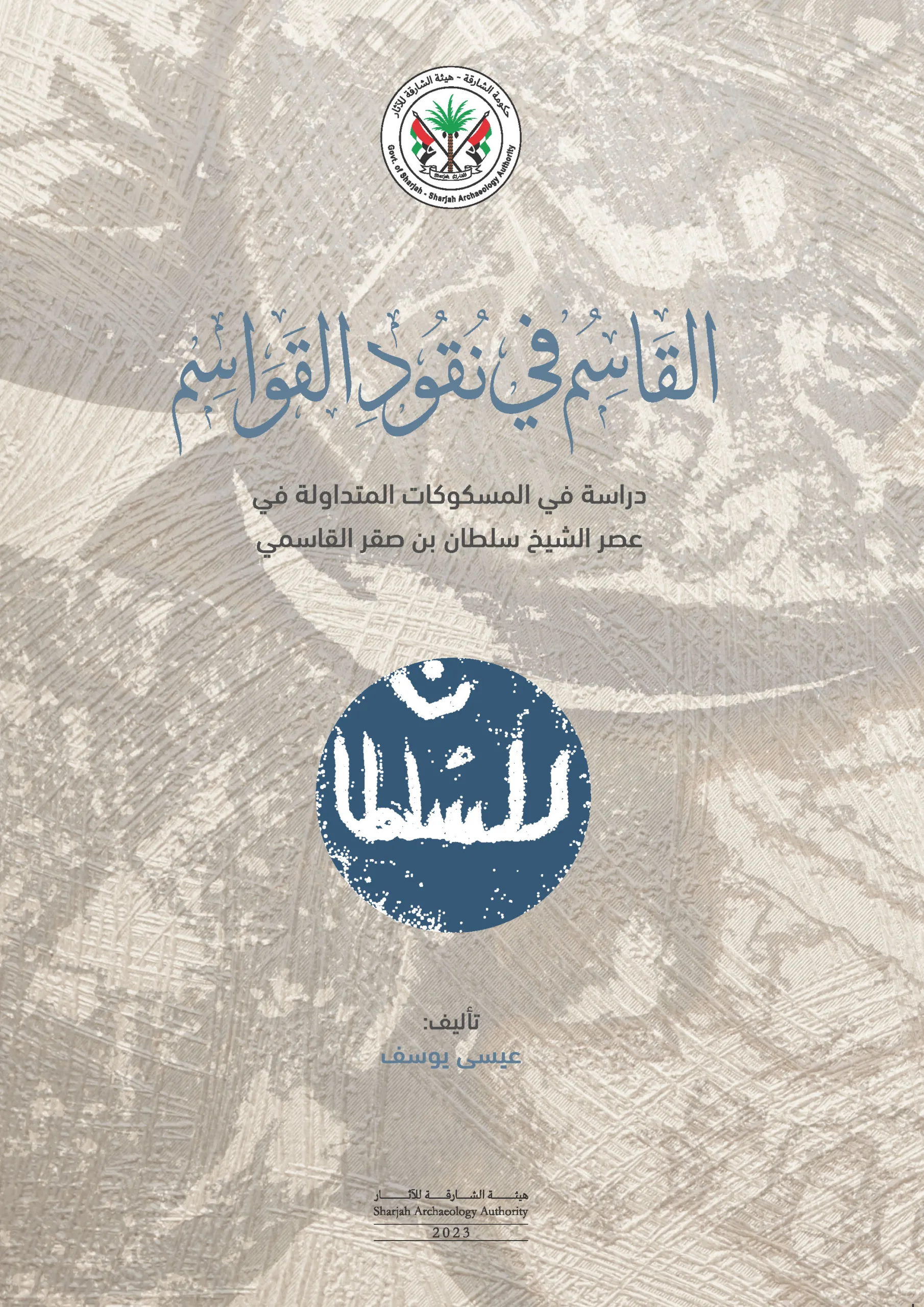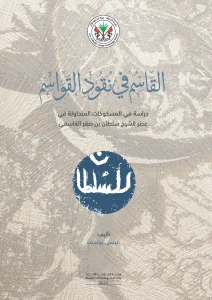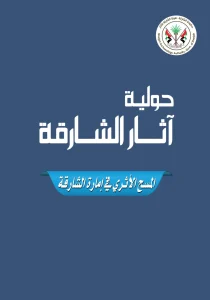Published Date : 2023
Auther : Mr. Issa Yousef
Publisher : Sharjah Archaeology Authority
Available Languages -
A study of coins in circulation during the era of Sheikh Sultan bin Saqr Al Qasimi
In this book – God willing – we will study the money that was circulated in the Arabian Gulf during the rule of the Qawasim.Especially in the areas that were under the control of the Qawasim.His Highness Sheikh Dr. Sultan bin Muhammad Al Qasimi, Member of the Supreme Council and Ruler of Sharjah, stated that the currenciesWhich was circulated in the Arabian Gulf in general, and in the United Arab Emirates in particular, during the rule of the Qawasim state,In the period between the seventeenth and nineteenth centuries; As he pointed out in his book: The Struggle of Power and Trade in the Gulf (1620-1820 AD: The value and weight of currencies also varied widely during the period of this study, and their interrelationships were complex.Similarly; In Persian trade, the unit of account more commonly used than currency was theToman. Its value has fallen from approximately 3 pounds 7 shillings to less than one pound (only about ten shillings according to oneReports in the years (1817 – 1820 AD), but for mathematical purposes, were still considered during most of the period as having a value equal to3 pounds, or 30 rupees. Its value fell outside Persia, and at one time it was worth 20 rupees in Gombroon,It was worth only 15 rupees in Basra, and 13 rupees in Ras al-Khaimah, and the toman (1) remained moderately stable against the gold currency.The favorite in Ottoman lands, namely the Venetian (Venetian) ducat, which amounted to about half a toman, and for a dollarMaria Theresa (German Crown or Real) A toman was worth about eight.A toman was usually equal to 200 Shahi or 100 Mahmudi. Wherever it existed as currency, the Mahmudi was made of silver.The toman is gold, but the Mahmudi, like the toman, usually gives a recognized value in the accounts of the East India Company.Naturally 8 gun ducats. Respectively, the Shah entered into the accounts the value of 4 Venetian ducats. And the inclusion of Al-Mahmoudi in(Glossary of terms) shows how its value, like the value of the toman, declined over a certain period.After the toman, the most commonly used unit of account was the rupee, but its variations were numerousPrimary sources: equivalent prices whose meaning is apparently incomprehensible (and the same applies to weights), and we can be sure thatThe local rupee, or other unit, was in use, and the Bombay rupee emerged from the Surat rupee from about 1800 AD,But there are still a lot of local rupees in circulation. The rupee was more stable against the British pound than it had beenToman is upon him. The East India Company’s custom was to consider a Pompey rupee equal to one florin (English specie).The coins were worth two shillings, not the Dutch guilder as it was known.) The rupee and Maria Theresa dollar were the coinsused in the Gulf; One pound sterling was worth about 13 rupees, or 3 to 4 Maria Theresa dollars, but evenAt the end of the study period, a Maria Theresa dollar was worth about 2.5 rupees.Although not mentioned in the book, an additional type of criticism was still in common use at the beginning of our periodIt is the larin. It was an eye-catching piece of silver, shaped like a stick, the size of a matchstick, and its size increased at its end.Six of them were worth one gun ducat, and were used on the Lar coast (where they were probably made), and also,On the west coast of India and the Maldives.This book aims to study the currencies in circulation in the Qawasim state, especially the currencies issued by Sheikh SultanBin Saqr Al Qasimi) during his rule, which represents one of the most important manifestations of rule and authority for the Qawasim state in that period.Ahmed Qasim Al-Bourini referred in his book: (The Seven Emirates on the Green Coast) to the currencies minted and circulated by Sheikh Sultan bin Saqr Al-Qasimi, and said: The currency in circulation is the Indian rupee, which is divided into 16 annas, and is equal to the British pound.13.4 rupees, and on the coast there is one British bank, headquartered in Dubai, with a branch in Sharjah. The late Sheikh Sultan binSaqr Al-Awwal, who died in the year 1282 AH, minted a coin in his name. The unit of weight is the tola, which is the weight of a rupee, and each (40) tola is equal toA pound (about half a kilo), the weight of (45) tolas is called (a cup), and the weight of nine pounds or eight cups is called (manna), and the plural of them isTwo security.These coins were mostly made of copper, and had a simple, circular designThe inscriptions are also simple, all revolving around the name of the ruler during the period when the coin was minted, or the name of Sheikh Sultan bin Saqr, and in other coins.You can read the city of the mint, the history of the mint, and some simple floral or geometric decorations.Money represents a political, social, and economic document, and it was of great importance to the Qawasim state at that time. It is evidenceThere is no doubt about the period of Al-Qawasim’s rule of the region, and the establishment of a state with its own political and economic entity.It is the sign of the king and the sultan, and the main badge of rule, which expresses the political entity, which is clearly evident through this.Coins, which is consistent with the historical framework of their rule, especially what contemporary historical sources and documents reported aboutThe great role played by Sheikh Sultan bin Saqr Al Qasimi in preserving his country, repelling the attacks of its aggressors, and expellingThe colonizers are a prominent role that history attests to, and no one denies it except the ungrateful or the hater.Hence, this money was a historical document confirming the rule of Sheikh Sultan bin Saqr Al Qasimi over this country that he defended.The colonists fought for it, and not only that, but the issuance of this money confirms the existence of the large economic entity of the stateAl-Qawasim during the era of Sheikh Sultan bin Saqr Al-Qasimi, who greatly assisted him in establishing an institution to mint the necessary money.And necessary for the state’s economy, as Sahl A
Al-Qasim in Al-Qasim coins
Published Date :
Auther : Mr. Issa Yousef
Publisher : Sharjah Archaeology Authority
Available Languages -
A study of coins in circulation during the era of Sheikh Sultan bin Saqr Al ...
ANNUAL SHARJAH ARCHAEOLOGY ISSUE 18
Published Date : 2021
Publisher : Sharjah Archaeology Authority
Available Languages -
This new issue of the “Sharjah Antiquities” yearbook is issued, and the world is still ...


